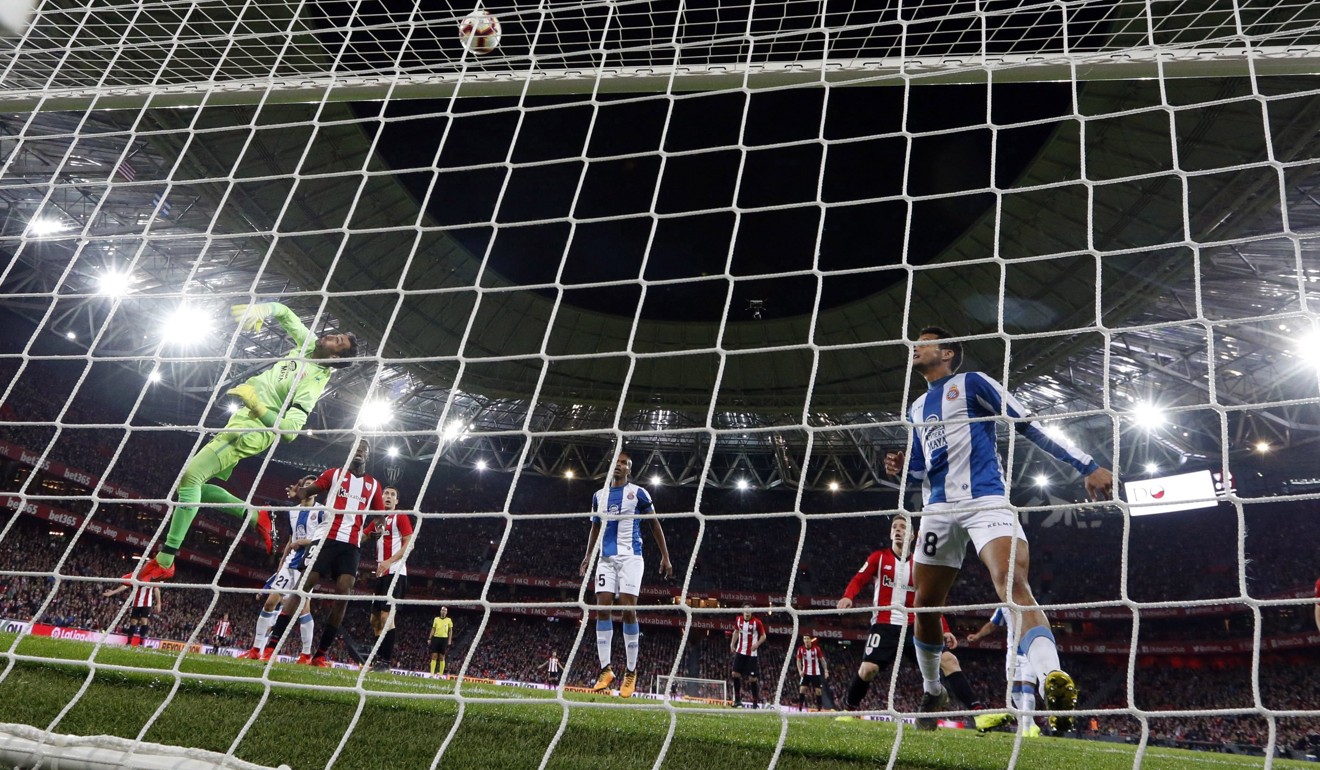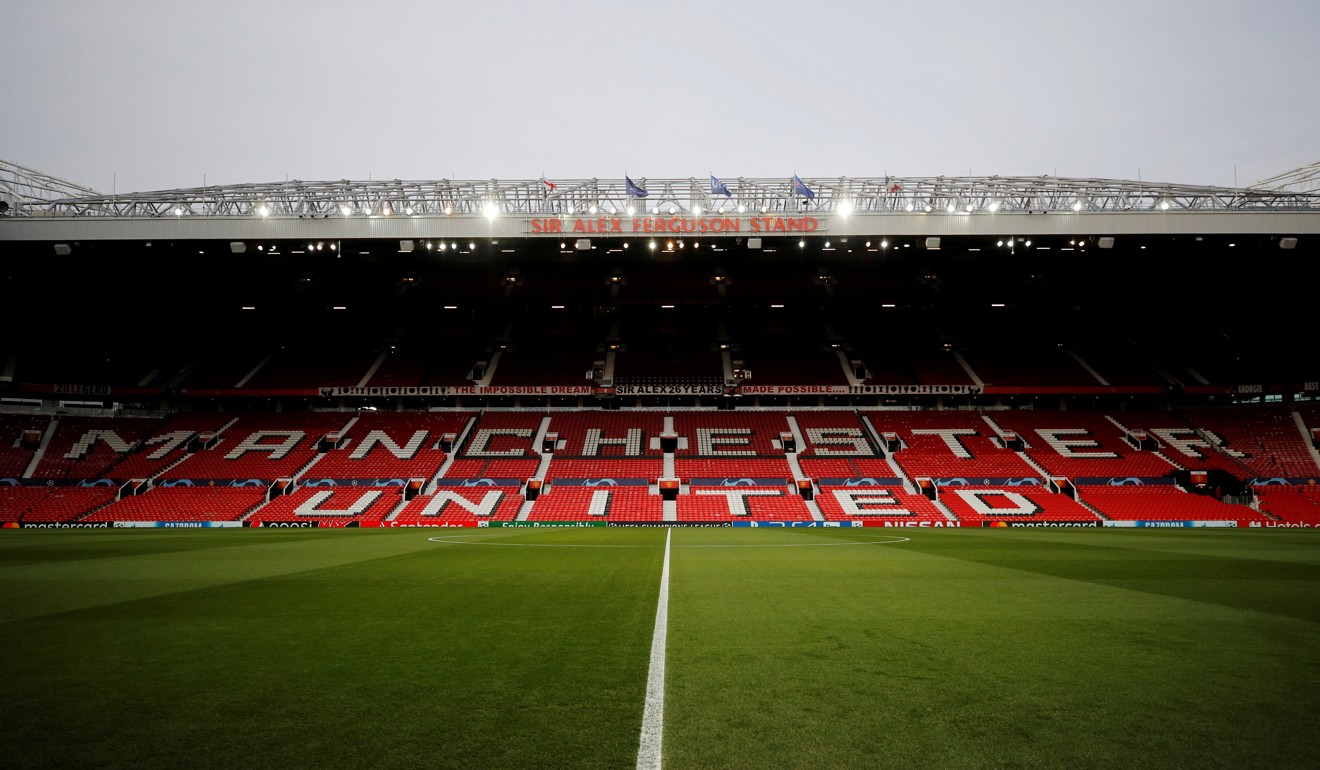It's finally here!
The first game will take place at Tottenham Hotspur Stadium today #SpursNewStadiumpic.twitter.com/4Yb4Z27fSG
— Goal (@goal) March 24, 2019
As Tottenham Hotspur Stadium finally opens, the list of Premier League grounds gaining on Old Trafford continues to grow
- Manchester United’s home had limited upgrades in recent years
- Almost half of the Premier League’s clubs have plans to upgrade their homes substantially

Tottenham Hotspur’s new stadium, which opened with a trial event on Sunday, looks magnificent. Costing £1 billion (US$1.3 billion), it’s the best stadium in England, with its 62,062 capacity only second to Manchester United’s Old Trafford.
There’s a vast single-tiered stand behind one goal seating 17,500, the stands are steep and close to the pitch, the acoustics praised, the architecture as awe-inspiring as when Munich’s Allianz Arena was opened in 2005.
There are other pluses, since there’s space for safe standing areas should legislation allow. Spurs’ new home is built on the site of their historic home, just as Athletic Bilbao built their new San Mames overlapping the old site. These things matter.
Ideally, a stadium should be part of a community and fans should be able to retrace the pre-match rituals of their fathers. The best located stadiums – Newcastle United’s St James’ Park, Real Madrid’s Bernabeu or Bilbao’s New San Mames, Deportivo La Coruna’s beachside Riazor or Seattle Sounder’s CenturyLink Field are in the heart of the city surrounded not by stadium-owned franchises selling overpriced food and drink, but independent bars, cafes and restaurants. The opposite is the overly corporate Levi’s stadium, home of the San Francisco 49ers, 43 miles from downtown San Francisco and surrounded by car parks.
West Ham’s new home, London’s Olympic Stadium, does not feel like West Ham. And the second tier of the stands is too far from the pitch, but West Ham’s crowds are now touching 60,000.
The Bernabeu, the best stadium in football, is in a prime site. Rivals Barcelona need to expand Camp Nou. They plan to cover the whole stadium, which last received a major upgrade for the 1982 World Cup finals, and boost the capacity to 105,000.
62,062 seats
A 'Market' with over 60 food & drink outlets
A Sky Walk to give a view of London
State of the art retractable pitch
The South Stand is one single tier, housing 17,500 fans
No front row seat is any more than 8m away from the touchlineThe Tottenham Hotspur Stadium pic.twitter.com/rCzYO2RDse
— bet365 (@bet365) March 24, 2019
The Tottenham Hotspur stadium is not the only development in the Premier League. Everton are finally set to build a new home in a prime position on the banks of the River Mersey near the city centre.
Manchester City plan to increase the capacity of their smart stadium to 60,000 when demand warrants it.

Liverpool already have the demand and want to expand Anfield to over 60,000 too. Redeveloping Anfield is helping regenerate a deprived north Liverpool neighbourhood around it.
There’s still much to do, but staying at Anfield, where space to expand has been created, has been right for Liverpool.
Arsenal’s Emirates was cutting edge when it opened in 2008 and being so close to Highbury was a bonus, but it loses any edge with a lack of atmosphere.
Chelsea plan to expand Stamford Bridge, but it will be mightily expensive to do so.
Ambitious Wolves have firm plans to upgrade their city centre Molineux home to house 50,000.
Crystal Palace will build a vast, much needed, main stand.
Brighton’s sleek new home helped establish them in the Premier League.
Fulham want to build a large Riverside stand with a timber roof by the Thames.
But what of Britain’s largest club ground, Old Trafford? Not much. Without borrowing a penny, Old Trafford was expanded almost continuously between 1992 and 2006, a year after the Glazer family took over. There have been piecemeal improvements to executive facilities, but little more.
Old Trafford was just about the only major stadium which didn’t have properly functioning Wi-fi for journalists – until 2018 when it was finally sorted.
In 2006, Old Trafford’s 76,000 capacity was 24,000 bigger than the next biggest, in Newcastle – and both grounds warranted it as they were almost always full. Now, Arsenal, City, Liverpool, West Ham and Spurs have gone past Newcastle, a club who’ve stalled under their unpopular owner Mike Ashley.
Capacity is only one measurement of ambition and clubs derive more revenues now from media and commercial activities than match day revenues, but it’s still important. A bigger Old Trafford would still sell out most weeks.

Plans exist to expand the stadium with extra seating above the main stand and in the two unfilled corners on the upper tiers, but nothing has been done. Old Trafford looks dated compared to the newest – and it hasn’t dated well like Chicago’s Wrigley Field, Fulham’s Stevenage Road stand or Ibrox’s glorious main stand.
Old Trafford is still an iconic stadium of world football in which players love to play. It’s at its best for a big European night, but if the Glazers are set to be owners of Manchester United for the long-term, they should invest in the stadium.
It would give the ground more uniformity since the main stand is far smaller than the rest. If they do, fans can live with the limitations – the grim grey roofs which slope steeply and limit the views of those at the back, the tight legroom.
It won’t be cheap to expand Old Trafford, but the demand is there and United’s value has never been higher. It’s good that Old Trafford hasn’t taken the name of a sponsor, but the club can’t continue not to invest, for the longer it is left and the more rivals play catch up, the more the great old stadium looks its age.